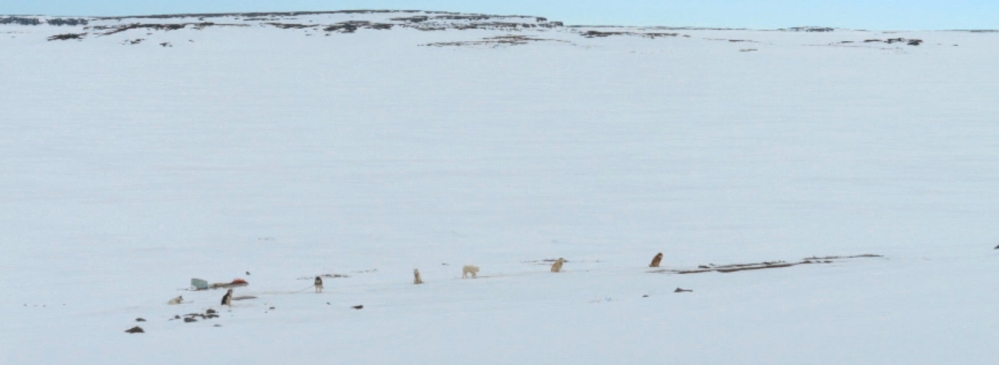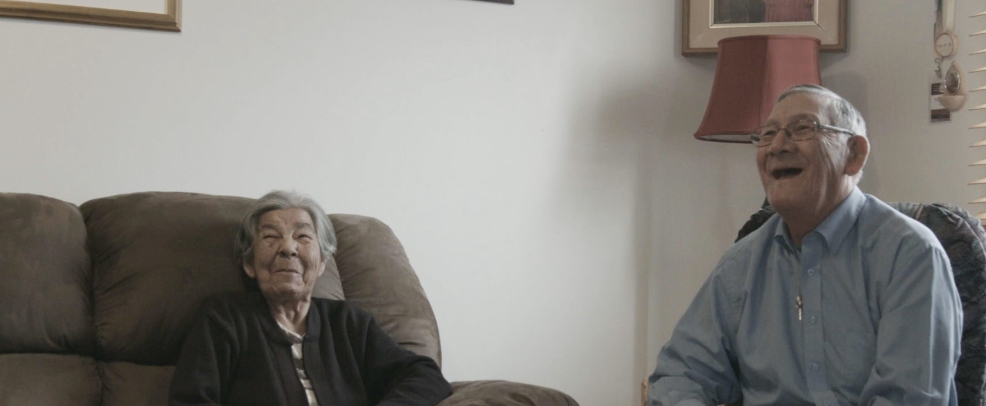 Examining several indigenous languages and cultures across Quebec, THOSE WHO COME, WILL HEAR is an insightful but flawed new documentary from director Simon Plouffe. Though its aesthetic and structural approach does not add up to a wholly engaging experience, the film provides a meditation on the ‘oral tradition’ as a potential method for cultural preservation.
Examining several indigenous languages and cultures across Quebec, THOSE WHO COME, WILL HEAR is an insightful but flawed new documentary from director Simon Plouffe. Though its aesthetic and structural approach does not add up to a wholly engaging experience, the film provides a meditation on the ‘oral tradition’ as a potential method for cultural preservation.
Providing no overt narration, the filmmakers trek across Quebec to interview various representatives of each area’s indigenous culture, most notably the descendants from the Innu tribe in the earlier sections, and to document the educational and musical activities that are partially serving to maintain their traditions. Ultimately, the film comes to convey a lament on the inescapable transience of all cultures and languages, but also to reveal modern technology’s potential for aiding the preservation process.
From the outset, Plouffe sets the tone in expressing the growing isolation of indigenous culture in Quebec. He certainly demonstrates his eye and ear for capturing the magic of natural moments; kids walking a road embanked by heavy snow, a man plucking the feathers from a chicken, unforgiving wide-angle landscapes overlaid with a plaintive Innu chant rumpled by vinyl scratchings, and snow sifting through an empty street, vanishing as fast as the spoken word of the First Nations. Additionally, he frames the ageing speakers in intense closeups, lingering on their mouths and gesticulating hands as they speak and sing – ancient faces under our observation, each wrinkle and crease a story, a lifetime.

But as much as Plouffe seeks to poeticise the already-poetic, he concedes the film as an activist project, as much as an artistic one, setting out to explore how succeeding generations are themselves acquiring the traditions of their forefathers. In one remarkable scene, a father picks his son up from school, and takes to teach him some of the tracking methods of their respective tribe. Here, they listen to the sounds of the wilderness (for instance, a loon’s wail indicating the presence of a lake), but through pre-recorded examples on an audio recorder. The father speaks of the son’s “duty to learn these things”, more so to take on his descendants’ expertise and custom, than to literally use them in the wilderness.
With such optimism conflicting with its inherent melancholia, the film trapezes between the representation of the elders’ eulogising of indigenous culture, and a handful of younger generations who are not entirely as ignorant as the old folks may suggest. Initially, the film signposts millennials’ ignorance of their past; we see youngsters in a moving train captivated by their headsets and portable consoles. Yet later on, a man tells of his own son building a birch-bark canoe, not from direct instruction, but from having watched his father and grandfather’s techniques long beforehand. Despite the importance of the oral tradition, a documented visual culture, including cinematic examinations, can equally be relied upon as a resource of historical learning.

Moreover, Plouffe teaches us that modern technology (film, radio communication, sound recording) acts as a potent force in preserving not just the bare (informational) aspects of a culture, but its experiential qualities as well. At several points, we are shown passages where the film reverts to analog film stock and handheld nature cinematography, overlaid with chants recorded in the first decades of the twentieth century. These impressionistic montages ultimately instil the importance of nature within these cultures and perhaps some of the mysticism attached to their beliefs. And though the images themselves were shot recently, the concurrent archive recordings immerse us into the experience of these cultures’ values – as if we are looking at nature through the eyes of a culture more heedful of its beauty and its sacredness.
However, even though Plouffe often punctuates the film’s flow with the harsh beauty of the snowbound plains of the Canadian/Quebec region, there is often a lack of visual interest to the viewer. The film gives the impression, yes, of a confident and accomplished filmmaker, but it does more to deliver information, than to successfully instil emotion and tone. Perhaps this is deliberate, but instead of being an engaged participant in a cross-cultural dialogue, the viewer is instead thrust into the position of an examining anthropologist. You find yourself hoping for more of those remarkable analog segues, with the film often feeling cold and detached; static angles, standard framing, no movement.
Plouffe gives us a documentary which succeeds in informing us about an overlooked culture, but not always connecting us with it. Information only sticks when the filmmaker exhibits a clear, creative and emotional engagement with the material. And whilst this film displays a great humanism in its expression of the subject matter, it is still a suggestion of the director’s full potential.
THOSE WHO COME, WILL HEAR is screening at the 2018 Open City Documentary Festival on Saturday 8th September, where director Simon Plouffe will be present for a Q&A. Read other coverage of the festival here.

